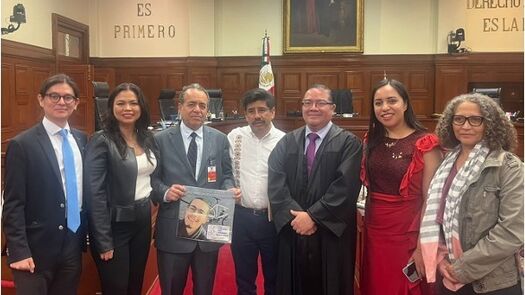December 17, 2025
August 26, 2024
Reducing Injuries Worldwide
Injuries and violence – including burns, drowning, falls, gun violence, intimate partner violence, overdose and road crashes, among others – take the lives of 4.4 million people globally each year, and tens of millions more experience non-fatal injuries. The effects are devastating, impacting quality of life, mobility, economic livelihoods and heightened health risks, as well as loss of life. Whether intentional or unintentional, injuries are not inevitable and can be prevented.
Globally, the health disparities are stark: about 90% of injury-related deaths occur in low- and middle-income countries. Within the United States, Black, American Indian and Alaska Native, rural and low-income communities disproportionately carry the burden. These broader social, economic and environmental determinants of health, along with individual, family and community factors, must be considered to address the burden of violence and injuries. There is an urgent need for public health policies at the national level, supported by a global mobilization of political will and resources.
At the Global Health Advocacy Incubator (GHAI), our Injury Prevention programs support advocacy campaigns that advance policy changes and effective preventative interventions. We work with local civil society organizations to raise awareness and the voices of victims and survivors and to draw attend the need for continuing investment in policy change. From making roads safer and saving children from drowning to reducing deaths from overdoses, GHAI and our partners are creating a healthier and more equitable future for all. Here is a snapshot of our current work to prevent injuries:
Drowning Prevention: Nearly 236,000 people drown each year and drowning is one of the leading causes of death among children globally, especially in Asia and Africa. GHAI supports governments in Bangladesh, Uganda and Vietnam to test and implement proven drowning prevention interventions, including survival swim training, water safety education and childcare centers, and works with local communities to create awareness and generate demand for services to achieve sustainable drowning prevention programs.

We also raise awareness of the global burden of drowning through work with journalists and emerging leaders around the world to better advocate for effective drowning prevention programs and policies to expand and strengthen drowning prevention expertise nationally and globally.
Overdose Prevention: Between 1999 and 2021, more than one million Americans lost their lives to overdose. Since 2021, the death toll has topped more than 100,000 lives lost every single year. The tragedy of this staggering loss is compounded by the fact that each one of those deaths was preventable. Substance use disorder (SUD) is one of the most treatable chronic diseases. People with opioid use disorder are as much as 80 percent less likely to die if they receive medications to treat their addiction, yet thousands are unable to receive them.

GHAI advances U.S. federal policies that address this crisis with the goal of saving lives from overdose. To do this effectively, we advocate for U.S. federal policies with three main objectives:
- Promoting access to low-threshold treatment for SUD—treatment when you need it, where you need it, and for a price you can afford.
- Removing barriers that create inequities in the treatment system— equitable access to treatment alone is not enough, the goal really is equitable care and equitable health outcomes for all Americans regardless of where they live, their income level, or their race.
- Decreasing stigma and improving public perception of help-seeking.
Road Safety: Road traffic injuries are the leading cause of death among individuals aged five to twenty-nine, with over half of these fatalities involving pedestrians, cyclists, and motorcyclists. However, road crashes are preventable through effective policies and strong political commitment. To improve road safety and reduce these numbers, GHAI’s Road Safety program works with over 50 civil society and government partners across nine countries including Bangladesh, China, Colombia, Ecuador, India, Mexico, Uganda, Ukraine and Vietnam. Our collaborative efforts concentrate on advancing policies that target five critical behavioral risk factors: child restraints, drink driving, helmets, seat belts and speeding, as well as pushing for enhanced vehicle safety standards.

Our support to civil society partners includes political mapping, strategy on engaging with decision-makers, launching media advocacy campaigns, and monitoring policy enforcement. By strengthening the impact and sustainability of advocates, GHAI is driving meaningful progress in road safety, with the goal of saving lives. Highlights of policy successes and advocacy achievements in some of our focus countries include:
- Colombia: Julián Esteban law passed, requiring 50Km/h speed limits in urban zones and 90km/h on highways.
- India: Speed Management Guidelines approved in state of West Bengal, the first in the country.
- Mexico: General Law on Mobility and Road Safety passed, addressing behavioral risk factors and raising vehicle safety standards.
- Ukraine: Amendments enabling fines for speeding 50/km/h above the posted speed limit adopted by Parliament.
- Vietnam: Passage of Road Traffic Law and the Law of Roads.
Preventing Gender-Based Violence: GHAI partnered with Every Woman Treaty and Women for Human Rights Nepal on a project funded by the Rotary Foundation to support women’s rights leaders in Nepal to build a nationwide coalition that is raising awareness about, and advancing policies and other measures, to prevent violence against women.
We will continue to gain a deeper understanding of the global injury prevention landscape and support advocacy campaigns and locally-led movements that advance policies that to reduce preventable deaths and improve health for all.


